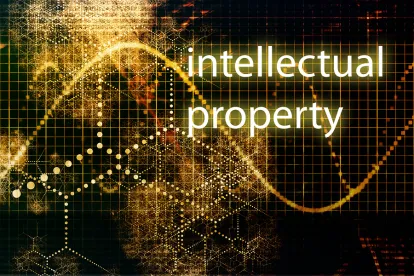Takeaway: A declarant’s prior statements acknowledging an inventor being the first to report on claimed subject matter may not be inconsistent with later testimony that the same subject matter is unpatentable based on a patent prior art reference because patent references are not necessarily part of the body of work reported in academic literature.
In its Final Written Decision, the Board found that Petitioner established by a preponderance of the evidence that the challenged claims of the ’503 patent are unpatentable. The ’503 patent “is directed to a microfluidic device for analyzing and/or sorting biological materials.
With respect to claim construction, the Board had construed two terms in its Institution Decision, and the parties did not challenge those constructions. Thus, the Board adopted its previous constructions.
The Board then turned to the alleged grounds of unpatentability, addressing each of Patent Owner’s arguments in turn. Patent Owner argued that Petitioner’s expert testimony by Dr. Anna regarding the Stewart II reference should be given little weight based on “her cross-examination at deposition on the subject of (a) her paper, independent of this proceeding, that acknowledges the Thorsen 2001 Article and (b) hypotheticals concerning the Stewart II device presented at deposition.”
With respect to Dr. Anna’s paper, Patent Owner argued that the paper acknowledged that the inventors were the first to report on the subject matter of the challenged claims and was now taking an inconsistent position by asserting Stewart II as prior art. The Board was not persuaded, however, noting that Stewart II, which is an international patent application publication, “was not part of the body of work reported in the academic literature.” Thus, as “supported by Patent Owner’s expert” deposition testimony, the Board found no inconsistency between Petitioner’s expert testimony and her earlier paper.
Regarding the hypotheticals concerning Stewart II, Patent Owner argued that Dr. Anna could not answer questions related to hypothetical modifications to the device of Stewart II. The Board was not persuaded, however, agreeing with Dr. Anna’s testimony at deposition that the hypotheticals “required additional information.” Thus, the Board found that Petitioner’s expert testimony should not be discredited.
Analyzing the prior art references, the Board found Petitioner’s arguments and expert testimony persuasive. The Board was also not persuaded that the prior art teaches away from the asserted combination, stating that “distinctions between the two references do not amount to discouraging one skilled in the art from the path leading to the claimed invention.”
The Board next addressed alleged objective indicia of non-obviousness, and particularly, industry praise and long-felt but unmet need. Patent Owner argued that the Thorsen 2001 Article disclosed elements of challenged claim 1 and that researchers in the field praised the Thorsen 2001 Article. The Board found, however, that Patent Owner failed to establish the required nexus between the evidence and the claimed invention. In particular, the Board noted:
Patent Owner’s evidence of praise relies, however, on Thorsen being first to report on a T-shaped junction geometry for a microfluidic device to produce droplets and, more generally, to “landmark work” in droplet based microfluidics, not any specific praise for the device itself even if encompassed by claim 1. . . . As discussed above, T-shaped junctions were known in the art for use in microfluidic devices as early as 1984.
The Board found that despite any alleged praise of the Thorsen 2001 Article, Patent Owner had not established that the praise was with respect to “what is ‘both claimed and novel in the claim.’”
As to the alleged long-felt but unmet need, Patent Owner relied upon “the length of time between Stewart II’s disclosure of a T-junction structure in 1984, Manz’s disclosure of capillary tubing having internal diameters between 0.9 μm and 24 μm in 1990, and the earliest priority date of the ’503 patent in November 8, 2000.” The Board noted that Patent Owner’s argument was “premised on the prior art T-junction structure to form droplets of Stewart II not meeting the need for miniaturization of microfluidic devices.” The Board was not persuaded that Stewart II evidenced any “difficulty in constructing a T-junction microfluidic device” and that the time gap between Stewart II and the ’503 patent priority date “is sufficient to establish long-felt need in view of the fourteen year gap in Leo Pharma, 726 F.3d at 1359.”
Thus, the Board found the evidence of alleged objective indicia of non-obviousness insufficient to overcome the strong obviousness showing.
Finally, the Board granted Patent Owner’s motion to seal “at least until the time period for filing a notice of appeal has expired or, if an appeal is taken, the appeal process has concluded.”
Bio-rad Laboratories, Inc. v. California Institute of Tech., IPR2015-00009
Paper 32: Final Written Decision
Dated: April 21, 2016
Patent: 7,294,503 B2
Before: Grace Karaffa Obermann, Donna M. Praiss, and Kristina M. Kalan
Written by: Praiss



 />i
/>i

